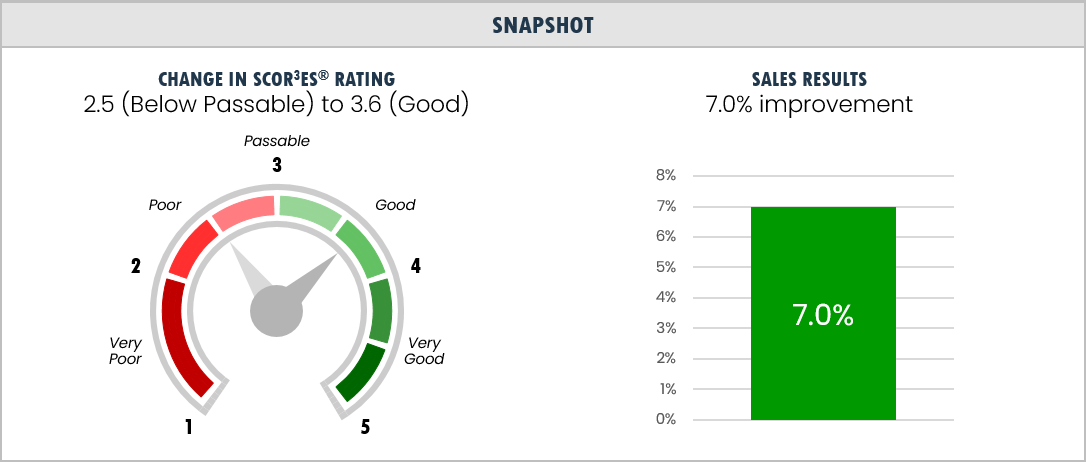Improving Goal-Based Plan Design & Goal Setting Methodology
Background
The company was a medium-sized pharmaceutical company with a product that had no competitive data available.
Old Sales Compensation Plan
The old sales compensation plan was a goal-based plan in which goals were set based on territory TRx volume trend since no competitive or therapeutic class data was available. This ultimately penalized good performers and rewarded poor performers—those who were growing were expected to continue their trend with an additional slight increase and those who were flat or declining were only given the slight increase. A convex payout curve was used with a step increase in bonus at 100% attainment. Payouts accelerated above 100%. This plan received an overall rating on our SCOR³ES® diagnostic assessment for sales compensation plans of 2.5, or below passable.
New Sales Compensation Plan
The new sales compensation plan designed by The Marketing Advantage was an account attribute cluster TRx goal-based plan. Accounts were clustered based on type, sales trend, and size. Goal setting was done by forecasting the percent volume change of each cluster, examining how many of each cluster a territory possessed, and adding up the projected sales increases. The payout curve was “S” shaped, had no step, was steeply linear around 100% attainment, and slowed down above 120%. This new plan received an overall rating on our SCOR³ES® diagnostic assessment of 3.6, or good.
Sales Results
Sales improved 7.0%. The new goal setting methodology dramatically improved goal accuracy, resulting in goals that were much fairer and more motivating than ever before. The sales force—especially representatives previously penalized for strong performance—was more engaged than ever and earned higher payouts as sales improved.






